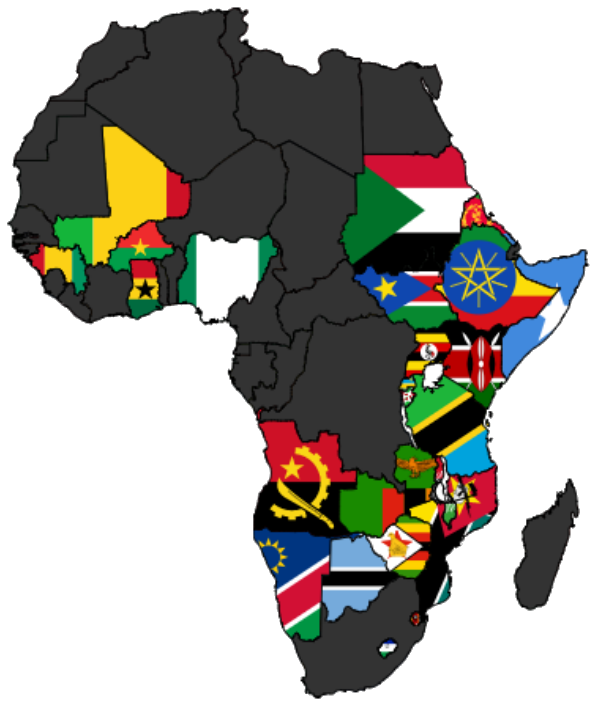On 9th November 2016, Donald John Trump, the underdog with no political background, defied all expectations to win America’s presidential election effectively becoming America’s 45th president. There were mixed reactions following his highly unexpected victory with both pundits and ignoramus souls trying to come to terms with what that meant to the entire globe. For a few hours, global markets crunched and in some regions it was reminiscent of the 2008 global financial meltdown.
Global economic recovery has been slow but steady after heightened policy uncertainty, a presidential election and weaker than expected growth in the United States in 2016, and Brexit jitters after the United Kingdom voted to leave the European Union. However, moderate recovery is expected in 2017 after signs of recovery in the commodities markets and developing economies.
Since the 2008 economic crisis, emerging markets in South America and Asia have played a big role in driving global economic growth, experiencing impressive GDP growth rates. BRICS, the acronym for five major emerging national economies – Brazil, Russia, India, China and South Africa – has made a significant contribution to global growth. However, it’s not all that rosy in this block of nations. Several factors operating independently threaten the growth of some members of this block of nations. Brazil is facing political turmoil in the wake of rampant corruption, Russia is wallowing in a slick of sanctions due to its role in the ongoing Syrian war, India’s economic growth is recovering from a hit in 2016 after demonetization of the country’s currency and change of leadership at the helm of the central bank, China’s rate of economic growth is slowing after 30 years of growth rates averaging 10% per annum.
Finally, South Africa’s economy is reeling from the effects of falling commodity prices. South Africa is commodity dependent exporting mostly gold, diamond, platinum and iron ore.
However, in the midst of this grim picture, there is a spot on the African continent that is basking in the rays of good economic fortunes (going by economic numbers). East Africa region’ economy has been resilient and is weathering the storm of slowing global economic growth. Buoyed by the discovery of natural resources including oil, gas, coal, and expansionary fiscal policies, countries in the East Africa region have recorded impressive GDP growth with the likes of Ethiopia and Tanzania leading the pack.
Declining commodity prices are the least of worries for East Africa economies since they are not commodity dependent. A fall in oil prices offers a reprieve to the current accounts of East Africa nations reducing production costs. Also, the discovery of fuel deposits comes as an additional gift to East Africa economies. The discovery of oil, gas, and coal means alternative sources of energy. Explorations are still ongoing. In addition, the East Africa region is also becoming a manufacturing hub for multinational companies. This is partly due to the availability of cheap labor and raw materials like textile and leather. Minimum wages in mainland China are growing consequently pushing multinational companies to seek alternatives to control the cost of production.
The threats
Inasmuch as E.A is recording stellar economic performance, it is worth noting that there are challenges facing the region and the situation is not as healthy as it may look. There’s an upcoming election in Kenya in August 2017. Going by what happened a decade ago and the rising political temperatures, investors, and the business community is becoming more cautious as uncertainty is starting to creep in. Political stability is paramount for the region to enjoy sustained economic growth. In 2007, Kenya’s economy grew by 7.2%. However, the aftermath of the post-election violence saw economic growth take a serious nosedive growing at a paltry 1.7% in 2008. A repeat of the same in 2017 will throw the country off balance with regards to its social-political aspirations in line with Vision 2030.
Structural reforms are needed to bring down unprecedented levels of unemployment. Unemployment in Kenya for instance now stands at 40% and has been one of the greatest challenges in the country with 80% of unemployed Kenyans being below 35 years old. Rapid population growth and skill gap have contributed to East Africa region’s high rate of unemployment.
The region is facing ravaging drought and according to the Famine Early Warning Network; Yemen, Somalia, South Sudan and Nigeria are said to be facing famine. Drought, lack of ability of nations to access food on the international market, and military conflict have been sighted as some of the primary causes of famine. The advent of erratic weather patterns has contributed to demand to pull inflation. Kenya’s annual inflation accelerated for a fourth consecutive month in April to its highest level in five years.
Much of East Africa is still grappling with insecurity. In Burundi, violence has crippled the country’s economy and the threat posed by Al-Shabaab cannot be underestimated. In South Sudan, millions have been displaced due to ongoing violence putting basic survival ahead of education and employment for many.
Governments need to invest in infrastructure and education. Manufacturing, export diversification, and regional integration will further bolster economic growth in the region. The precarious nature of the global economic recovery after the 2008 meltdown could further fuel populist calls for restrictions on trade and immigration. This would further hamper growth across the globe and hinder productivity and innovation.




